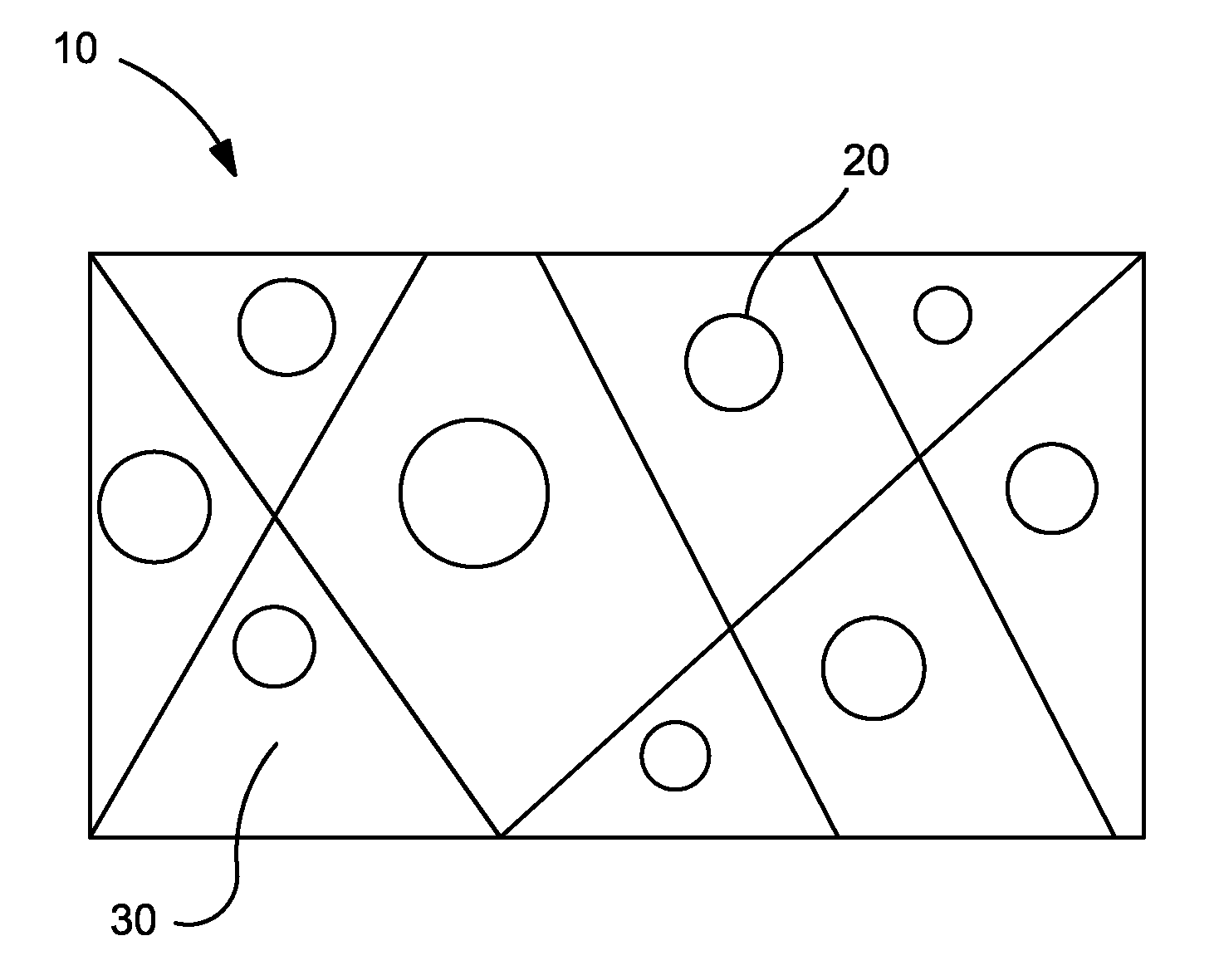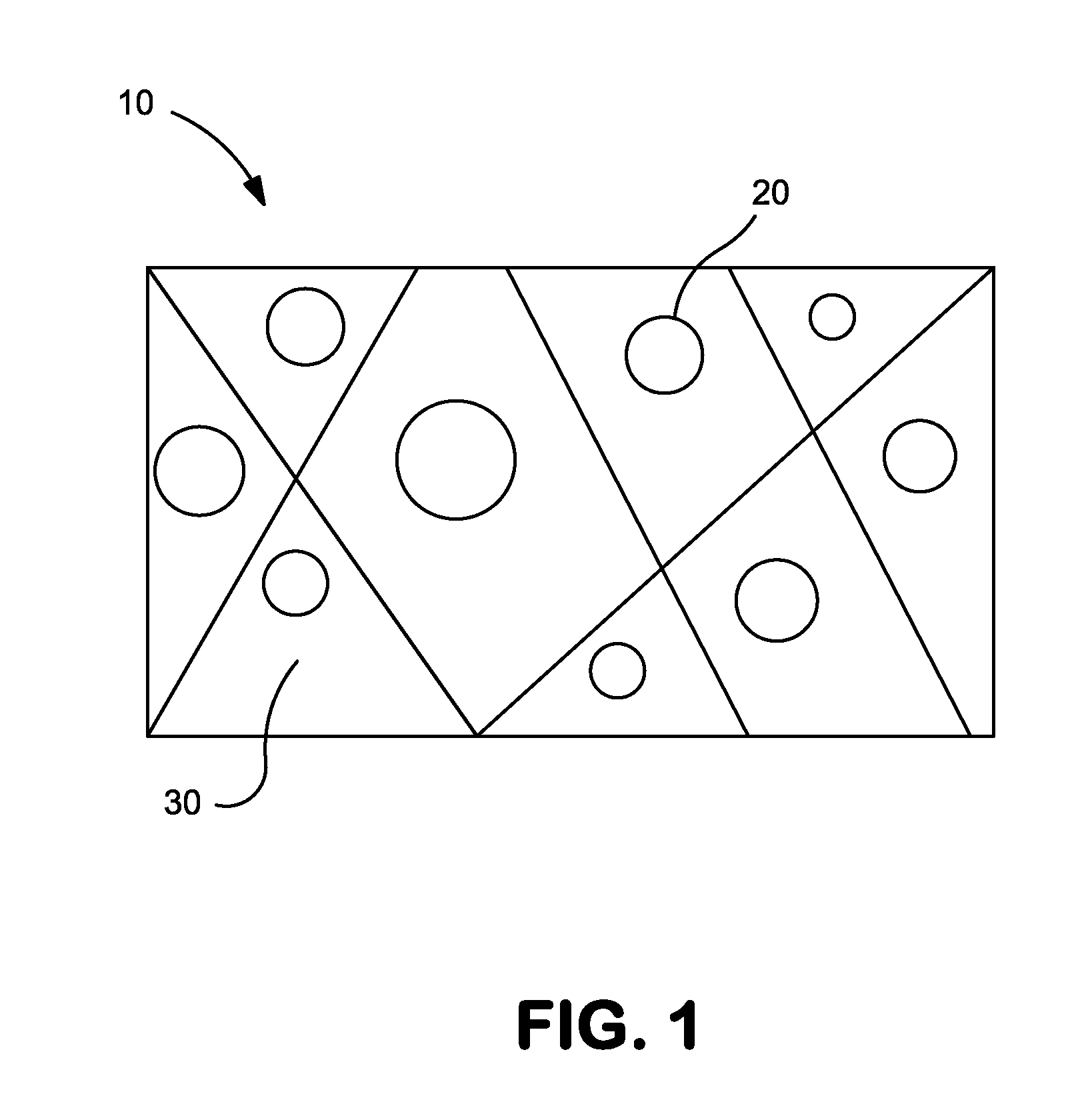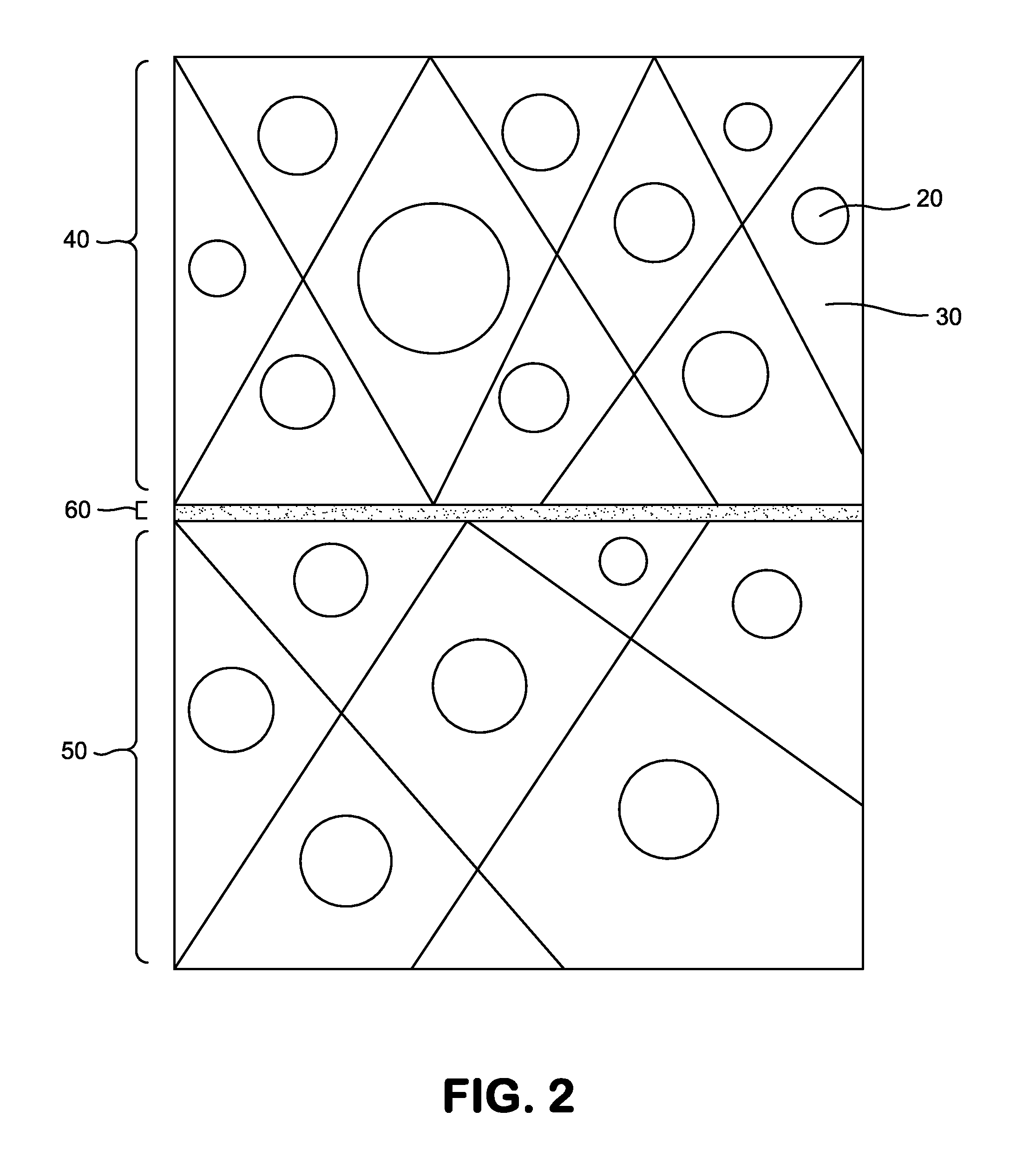Cleaning Article
a technology of cleaning articles and cleaning chemicals, applied in the field of cleaning articles, can solve the problems of inconsistent cooking of food, high heat, and soiled surfaces of commercial grills, grills, etc., and achieve the effect of minimizing the cleaning of loose soils and efficient delivery of cleaning chemicals
- Summary
- Abstract
- Description
- Claims
- Application Information
AI Technical Summary
Benefits of technology
Problems solved by technology
Method used
Image
Examples
example 1
Cleaning Fluids
[0051]An ePTFE sheet was obtained possessing the following properties: density of 0.50 g / cc, matrix tensile strength of 34 MPa in one direction, matrix tensile strength of 95 MPa in the orthogonal direction, thickness of 0.045 mm, and a bubble point of 0.15 MPa. FIG. 4 is a scanning electron micrograph of the surface of the expanded PTFE material used in this example.
[0052]A 100 mm diameter circular piece was cut from the sheet. The circular piece was weighed using a mass scale (Model EP413D, ExplorerPro, OHAUS Corporation, Pinebrook, N.J.). The mass of the piece was 0.20 g.
[0053]The circular piece was saturated with acetone and then placed in an approximately 110 mm diameter aluminum pan. Approximately 2 g of a cleaning agent (Kay Chemical Company, Product ID No.: 00301-50, Greensboro, N.C.) was added to the pan.
[0054]The piece was heated with a heat gun (Maser Appliance Corporation, Product ID No.: HG-751, Racine, Wis.) to expedite the evaporation of the acetone. Th...
example 2
Double the Concentration of Cleaning Fluids
[0059]An ePTFE sheet was obtained possessing the following properties: density of 0.50 g / cc, matrix tensile strength of 34 MPa in one direction, matrix tensile strength of 95 MPa in the orthogonal direction, thickness of 0.045 mm, and a bubble point of 0.15 MPa.
[0060]A 100 mm circular piece was cut from the sheet. The circular piece was weighed using a mass scale (Model EP413D, ExplorerPro, OHAUS Corporation, Pinebrook, N.J.). The mass of the piece was 0.20 g.
[0061]The circular piece was saturated with acetone and then placed in an approximately 110 mm diameter aluminum pan. Approximately 4 g of a cleaning agent (Kay Chemical Company, Product ID No.: 00301-50, Greensboro, N.C.) was added to the pan
[0062]The piece was heated with a heat gun (Maser Appliance Corporation, Product ID No.: HG-751, Racine, Wis.) to expedite the evaporation of the acetone. This step facilitated the penetration of the cleaning agent into the piece. A cleaning pad r...
example 3
[0067]An ePTFE sheet was obtained possessing the following properties: density of 0.50 g / cc, matrix tensile strength of 34 MPa in one direction, matrix tensile strength of 95 MPa in the orthogonal direction, thickness of 0.045 mm, and a bubble point of 154 MPa.
[0068]A 100 mm circular piece was cut from the sheet. The circular piece was weighed using a mass scale (Model EP413D, ExplorerPro, OHAUS Corporation, Pinebrook, N.J.). The mass of the piece was 0.22 g.
[0069]The circular piece was saturated with acetone and then placed in an approximately 110 mm diameter aluminum pan. Approximately 2 g of a cleaning agent (Colgate-Palmolive Inc., Dawn Dishwashing Liquid, Greensboro, N.C.) was added to the pan.
[0070]The piece was heated with a heat gun (Maser Appliance Corporation, Product ID No.: HG-751, Racine, Wis.) to expedite the evaporation of the acetone. This step facilitated the penetration of the cleaning agent into the piece. A cleaning pad resulted.
[0071]After drying, the piece was ...
PUM
 Login to View More
Login to View More Abstract
Description
Claims
Application Information
 Login to View More
Login to View More - R&D
- Intellectual Property
- Life Sciences
- Materials
- Tech Scout
- Unparalleled Data Quality
- Higher Quality Content
- 60% Fewer Hallucinations
Browse by: Latest US Patents, China's latest patents, Technical Efficacy Thesaurus, Application Domain, Technology Topic, Popular Technical Reports.
© 2025 PatSnap. All rights reserved.Legal|Privacy policy|Modern Slavery Act Transparency Statement|Sitemap|About US| Contact US: help@patsnap.com



